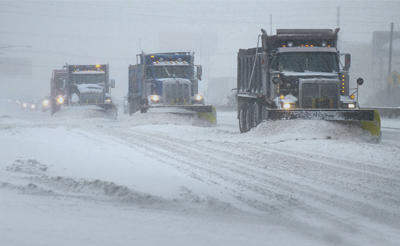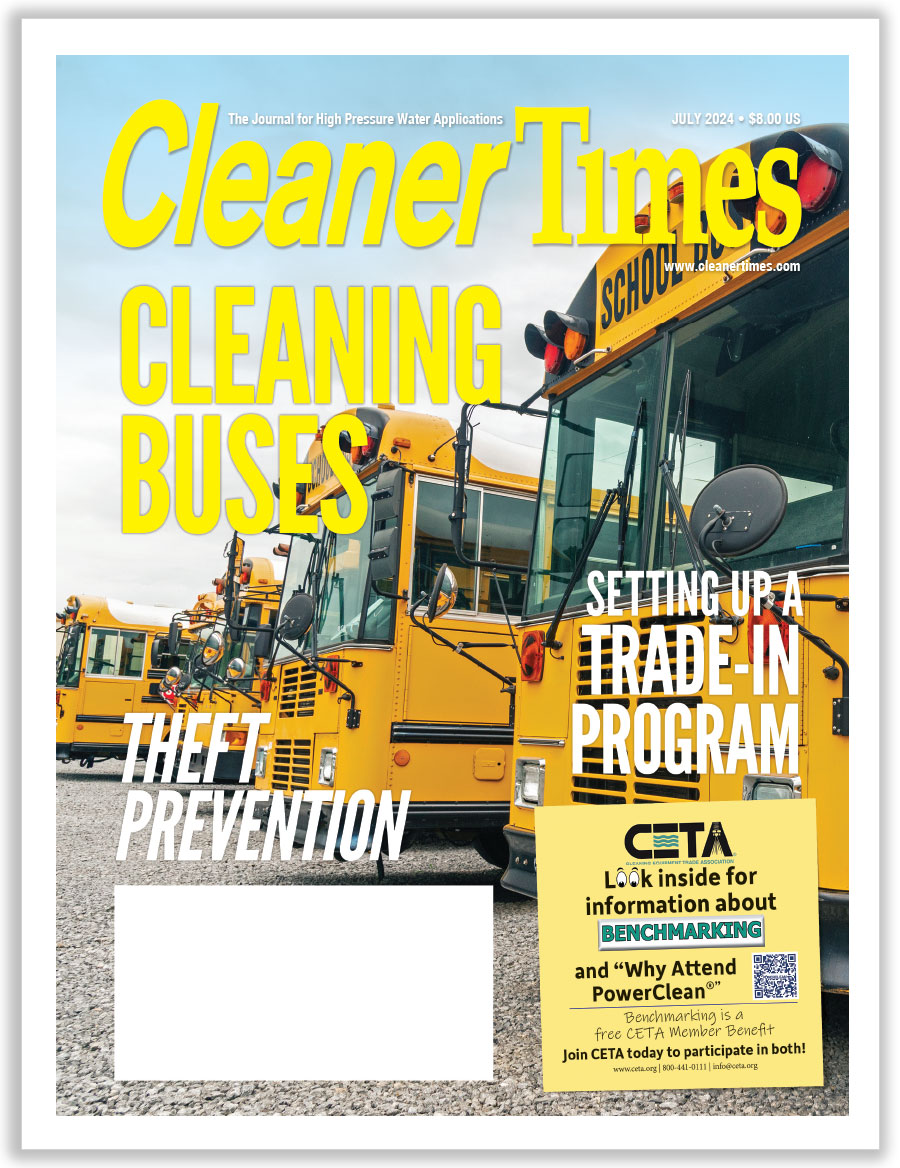
Snow Much Fun! Cleaning Snowplows
By Diane M. Calabrese / Published November 2023

Drivers have a love-hate relationship with snowplows. They love the cleared road but hate falling behind a snowplow chain.
Overall, though, drivers just assume snowplows will be ready to go and get the job done. The plows look indestructible, so they probably maintain themselves.
No machine maintains itself. Snowplows require just as much attention as other equipment. That attention includes cleaning, and it’s where pressure washers and chemicals enter the scene.
“Snowplows are exposed to dirty and corrosive environments,” says Joseph Daniel, CEO of ITD Inc. in Tucker, GA. “As such, pressure washers generally do need to be used, along with chemical products suitable for the challenge.”
Daniel’s company offers chemical products to meet the task. “Products such as our Salt Shaker and Neutra Salt are designed for use in winter environments,” he explains.
The chemicals accomplish several things. “They are designed to neutralize the corrosive effects of road salt while cleaning and leaving a protective barrier on the plow surface,” says Daniel.
A pickup truck owner who mounts a blade to do some plowing in winter must take just as much care in the selection of chemicals as the owner of a plow fleet. “The challenges are many, but the primary concern is how to clean without contributing to corrosion—and being thoughtful toward the long-term maintenance of the equipment,” says Daniel.
Presumably, any equipment owner has longevity—a long life of optimum service—in mind. “Proper chemical selection is critical here,” says Daniel, adding that choice must be made on quality of product.
Just grabbing any product without research can lead to poor outcomes. Choosing too quickly and not well may put in hand a product that takes longer to clean than necessary, explains Daniel. It might also result in the inadvertent use of a product that can over time damage equipment.
Some contractor members of our industry combine services across the year. Mike Hilborn, owner of RTD Power Washing in Saint Paul, MN, is one of them.
The repertoire of Hilborn’s company is extensive and includes snowplowing in winter. He not only keeps his own plows clean, but he cleans plows for other companies.
“One of our services is mobile fleet washing,” says Hilborn. “We use a hot water pressure washer and the two-step chemical method.”
Contractors even outside snow regions know the method. “Just like washing a truck to remove dirt and road salt, we do the same for snowplow equipment,” explains Hilborn.
In the broadest scope, snowplow equipment includes more than self-contained plows and pickup trucks with blades. Payloaders, skid steers, and farm tractors may all be put in service to move snow, explains Hilborn.
As for the frequency of cleaning, there are no shortcuts. “Basically, after each snow event we wash our snow equipment,” says Hilborn.
To be sure, the ambient conditions must be considered when cleaning plows. “We need to work around the weather so it isn’t too cold when washing,” explains Hilborn. “You don’t want the water to freeze the doors shut.”
Regarding the two-step wash method, there may be a bit of a modification dictated by weather. “If the temperatures are too cold, then we just use hot water.”
Hilborn has a bit of advice for contractors who might want to add the service of cleaning snowplows. It is to keep in mind that each snowfall is unique.
“We charge by the hour for this service,” says Hilborn. “You never know how caked with ice and snow the equipment will be from snow event to snow event.”
NO DISRUPTIONS
Commercial building owners, municipalities, and others that contract for snow removal typically include a criterion for a bidder to have viable equipment. The criterion is implied in every request for proposal (RFP) that’s disseminated. A contractor that wins a bid and cannot fulfill it because of failing equipment could incur significant costs for damages.
When cleaning equipment, a plow owner must consider the type of edge on a blade. If it’s a rubber edge, be sure it tolerates the cleaning chemical deployed.
Some communities will not accept steel-edged blades because of the damage steel does to certain types of pavements. A rubber edge does the least damage to pavement. Hybrid composition edges (e.g., rubber and steel) have more flex than all steel. If it’s a stainless-steel blade, the manufacturer may recommend conditioning with mineral oil.
The best source of information about how to clean a plow is the information provided by its manufacturer. The original equipment manufacturer (OEM) will offer detailed information on how to attend to every part of a plow or a mountable blade.
For instance, allow the equipment to air dry for a few days after cleaning. Don’t sequester it in an enclosed space dripping wet. Also, routinely check for any signs of rust formation and take corrective action.
Proper maintenance beyond cleaning includes everything from ensuring hydraulic fluid level is correct to lubricating hinges, springs, and pins (pivot points). Power washing contractors who already have checklists for maintaining their vehicles and trailers can with a few modifications make a similar list for any plow they might buy or for plows they contract to maintain.
The Snow and Ice Management Association (SIMA.org) in Mequon, WI, offers its members assistance on the myriad issues connected to snow removal. It’s a useful resource for power washing contractors who are considering getting involved with snow removal or cleaning snowplows.
Too often we refer to things in the world as in flux. But approaches to countering snow and ice on roads, parking lots, and walkways really are in flux. They vary widely among states.
In some places (e.g., Mexico, MO), the traditionally reliable cinders are still used. With fewer coal-fueled powerplants, there are fewer cinders. Moreover, even where there are cinders, they receive the same skeptical embrace as coal itself.
Cinders, however dirty, alleviate many of the unintended consequences of salt (and brine) use. The damage to bridges and vehicles caused by road salt was put at five billion dollars in 2020.
More than being corrosive, salt runs off and enters surface waters. Many states and municipalities now acknowledge that their draws of potable water sometimes have enough extra salt to affect humans negatively.
It’s not just people with elevated blood pressure who can be negatively affected by extra salt in their drinking water. Amphibians, fish, and aquatic insect populations are affected, too. At the same time, salty water runoff increases erosion.
The intense search for alternatives to or reductions in salt use has led to methods such as using mixtures of salt and sand. Of course, sand washing into freshwater can also cause problems before it settles from suspension.
Keeping roads clear and deiced requires tapping a chloride or a coal derivative or sand. Thus, reduction—using the minimum amount necessary—is the goal. Research and development teams do keep presenting options that in some cases seem more fanciful than fruitful.
One option being explored is porous pavement. The idea is that water just passes through the pores and thus ice formation on the surface is abated. That might work at 31°F, but we must wonder about the situation at 20°F when it seems unlikely water is going to be able to seep into solidly frozen ground.
For now, traditional salt, sand, and cinders are all in use, along with magnesium chloride. So, too, is gravel, which is very hard on vehicles. So as with any cleaning project, when cleaning a snowplow, identify the soil first and choose chemicals and approach accordingly.






